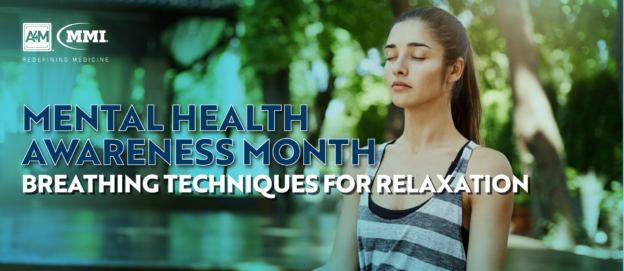More people are struggling with anxiety and stress than ever before; anxiety disorders are currently the most common mental illness in the American population, affecting more than 40 million adults. Despite its prevalence, people suffering from anxiety and stress often lack the tools they need to alleviate their symptoms and only 36.9% of them receive treatment. Access to professional help, treatment opportunities, and management techniques may not be easily accessible for everyone looking to improve their mental health, but one crucial element is ubiquitously available – the breath.
Of the many stress coping techniques and lifestyle habits, deep mindful breathing is one of the most important. Breath control has been proven to help subdue the errant stress response – or fight or flight reaction – when it becomes unnecessarily activated by day-to-day events. As chronic stress has been linked to a variety of health conditions such as high blood pressure, suppressed immune system activity, anxiety, and depression, it is important to combat stress reactions with their therapeutic counterpart. A relaxation response, or the state of profound rest, can be elicited through meditation, yoga, progressive muscle relaxation, and other soothing practices in combination with focused breathing.
The breath is a powerful tool for easing stress, reducing tension and anxiety, as well as stabilizing blood pressure. A variety of breathing techniques have proven beneficial for relaxation including:
Abdominal Breathing
Due to a variety of factors, deep breathing has become unnatural to many individuals living in a constant state of stress. Shallow chest breathing increases tension and heightens anxiety by restricting the diaphragm’s range of motion, preventing sufficient amounts of oxygenated air from reaching the lungs. Also known as diaphragmatic or abdominal breathing, this technique engages the diaphragm muscles to ensure full oxygen exchange while relieving physical and mental tension.
1. Find a quiet, comfortable place to sit or lie down.
2. Breathe in through your nose, filling the entire abdomen with air.
3. Breathe out through your nose or mouth.
4. Continue to inhale and exhale for several rounds. As you breathe in, make sure to feel your abdomen rise, and lower as you breathe out.
Breath Focus
Combining deep breathing with helpful imagery or focus words can benefit relaxation. The breath focus technique helps individuals concentrate on breathing while disengaging from distracting thoughts and sensations to successfully reduce stress levels.
1. Find a quiet, comfortable place to sit or lie down.
2. Close your eyes.
3. Take several deep abdominal breaths.
4. Inhale and imagine the air you take in is a sense of peace.
5. Exhale stressed and tense air out of your body.
6. Use either a word, phrase or image to meditate on as you breathe.
7. Continue for at least 10 minutes.
Equal-Timed Inhale and Exhale
Matching the length of inhales with the length of exhales is another breathing technique that engages both the body and mind.
1. Sit comfortably on the floor or in a chair.
2. Breathe in as you count to a desired number.
3. Breathe out for the same count.
4. Repeat several times.
Progressive Muscle Relaxation
This technique supports physical and mental relaxation through tensing and releasing individual muscle groups combined with deep breathing.
1. Sit or lie down comfortably.
2. Begin with a few deep abdominal breaths.
3. Breathe in while tensing the muscles of the feet.
4. Breathe out while relaxing the muscles of the feet.
5. Breathe in, tense the calf muscles.
6. Breathe out, release the calf muscles.
7. Continue up the body, tensing and releasing each muscle group with the breath.
Alternate Nostril Breathing
Practiced for thousands of years as a form of meditative breathing, alternate nostril breathing may help to promote overall well-being by reducing anxiety and relaxing the body.
1. Inhale with one finger over the right nostril, only breathe in through the left.
2. Exhale air completely.
3. Switch sides, inhale with finger over left nostril, only breathe in through the right.
4. Continue breathing at a comfortable pace.
Developed by Dr. Andrew Wiel, the 4-7-8 breathing technique is backed by anecdotal evidence supporting claims that it can relieve anxiety and help people fall asleep quicker.
1. Sit comfortably.
2. Breathe in through the nose for 4 counts.
3. Hold the breath in for 7 counts.
4. Exhale through the mouth for 8 counts.
5. Repeat the cycle.
There are many breathing exercises that can offer a simple, effective, and easily accessible technique for improving mental and physical wellbeing. Deep breathing practice has proven efficacious at reducing the negative effects of chronic stress and reversing the errant stress response, amongst other health benefits. However, consistency is essential to attaining optimal results in stress reduction – a deep breathing technique should be practiced daily for maximum benefit.

